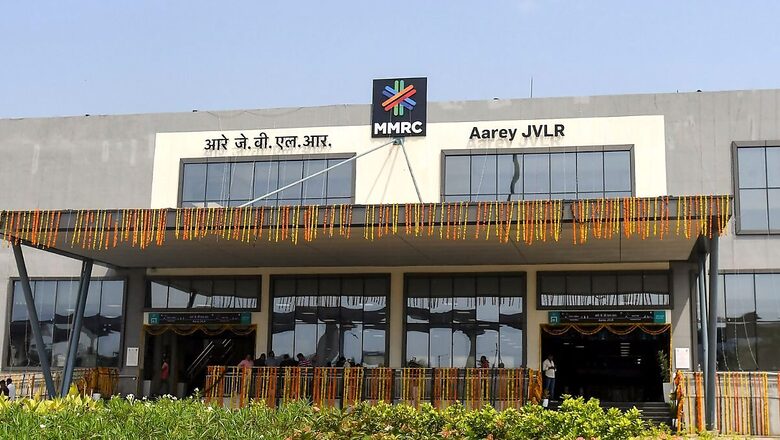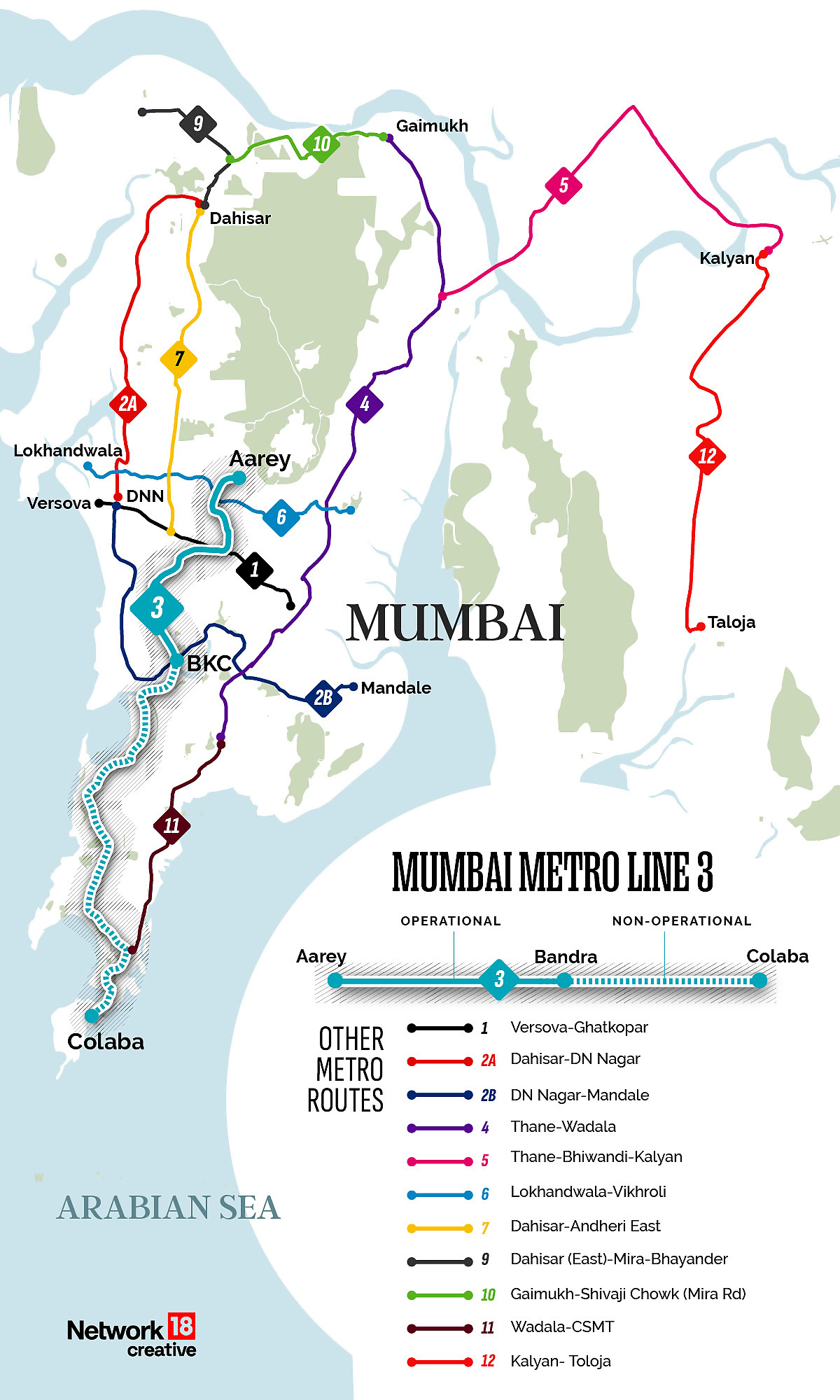
views
With the inauguration of the phase one of the Colaba-Bandra-Seepz Metro-3, all eyes are now on the second phase which will connect the suburbs to South Mumbai.
The first phase of the aqua line, from Aarey Colony to Bandra-Kurla Complex (BKC), was thrown open to public on Monday. According to reports, phase two – BKC to Cuffe Parade – is nearing completion and is expected to be fully functional by March 2025.
As Mumbai’s first entirely underground Metro line, the project is a monumental engineering achievement. Once operational, it will significantly transform the city’s public transportation system, easing traffic congestion and cutting down travel time across the metropolitan region.
Mumbai Metro 3 is off to a fantastic start! Mumbaikars are loving it, with long queues at stations showcasing the excitement. Here's to smoother, faster commutes for everyone! #MumbaiMetro3 #PublicTransport #MumbaiLife ️ pic.twitter.com/TGo4cB5nqy— MumbaiMetro3 (@MumbaiMetro3) October 7, 2024
87% WORK COMPLETED
Ashwini Bhide, Managing Director of Mumbai Metro Rail Corporation Limited (MMRCL), said, “Phase II from BKC to Cuffe Parade is expected to start in March 2025. The second phase will have 17 stations. The overall progress of phase II is 87%. The major challenges faced while construction of this phase include tunnelling in complicated geology and below old, dilapidated buildings around congested neighbourhood and in close vicinity of heritage buildings. Also, certain limits for vibrations had to be maintained and continuously monitored while tunnelling to ensure the safety of such buildings. Our team has successfully addressed complex tunnelling challenges, prioritising heritage building safety and vibration control through advanced technology and expert collaboration.”
By September 2024, the project has reached 87% completion. One of the major milestones achieved was the successful completion of tunnelling work with 42 breakthroughs, marking significant progress. These breakthroughs were crucial to ensure that the project stayed on track for its 2025 opening. Along with tunnelling, other civil works for the Metro are nearing completion, with 99.5% of the infrastructure in place. Station construction has also progressed, with 98.2% of the work done. Track installation, which is essential for operational readiness, is underway and is expected to be finalised shortly.

THE CHALLENGES
Metro-3 has seen numerous hurdles, given the complexities of construction in a densely populated urban area such as South Mumbai. One of the biggest challenges was working through heavily congested neighbourhoods where space is limited and traffic flow is constant. The alignment of the Metro runs under some of the city’s busiest roads, as well as through sections near heritage buildings, existing flyovers, railway lines and even beneath the Mithi River. These conditions required intricate planning to prevent disruptions and ensure the safety of both the public and construction workers.
In addition to space constraint, the project faced significant logistical challenges in terms of moving heavy machinery and materials. The limited space in urban areas made it difficult to transport and store construction material without disrupting the normal flow of daily life.
The city’s geography also added a layer of complexity, as the tunnelling process occurred near the coast, requiring engineers to contend with a high groundwater table.
Mumbai’s rocky geology made drilling and tunnelling tough. The construction faced environmental and regulatory challenges as well, particularly concerning Coastal Regulation Zone rules and obtaining clearances for forested areas. Moreover, the rehabilitation of residents affected by land acquisition posed additional challenges, requiring careful coordination to minimise disruption.
Making your metro journey more easier. Here's an overview of #distance and #fare chart for your travel journey from Aarey JVLR to Bandra Kurla Complex. #MumbaiKiQueenMetroTeen #ConnectingTheUnconnected #MumbaiUnderground#FareStructure pic.twitter.com/2SZRYZFFHd
— MumbaiMetro3 (@MumbaiMetro3) October 7, 2024
RELIEF FOR MUMBAIITES
When fully operational, the entire Metro-3 line will span 33.5 kilometres, connecting key areas of Mumbai through 27 stations, of which 26 will be underground. Trains are expected to run at intervals of just 4 minutes and 24 seconds during peak hours, ensuring that the Metro system offers a rapid and efficient mode of transportation for Mumbai’s bustling population.
ALSO READ | Mumbai Metro-3 Opens Today: Know Stations, Timings & Fares of City’s First Underground Metro
It will drastically improve connectivity to major commercial hubs such as Nariman Point, Bandra-Kurla Complex and SEEPZ, making it easier for commuters to travel across the city.
The Metro is projected to serve approximately 1.3 million passengers daily, offering a much-needed alternative to the city’s overcrowded roadways and suburban rail network. The introduction of this Metro line is expected to reduce overall road traffic by 35%, easing congestion and reducing travel time for both public transport users and motorists.
















Comments
0 comment